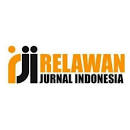Narasi Kandang: Dari Betlehem Menuju Manusia Baru Menggagas Spiritualitas Kelahiran Baru Para Religius Menurut Lukas 2:1-7
DOI:
https://doi.org/10.60130/ja.v9i1.8Kata Kunci:
cave narration, betlehem, spirituality of birth, the religiousAbstrak
We have been recently celebrating the Christmas. The Christmas
among chirstians is aways regarded as the memorial celebration
of the birth of Jesus, the Messiah, as the fulfillment of the prophesy
of prophets in the past. The most interesting symbols found during
this moment are the cave and the shepherds. Jesus, the Messiah,
has chosen the cave, the most simple place as the “locus” of His
birth. This choice is really an ironic panorama. The Most High, the
King of the kings has made the cave and the stable to be the “locus
of revelation”, the place where the High Being reveals Himself to
the world. From the beginning, the Savior introduces Himself as
the Most Poor among poors. Using this image, God is going to show
clearly His choice and fundamental option to human being. There’s
no highway to be Savior, except to follow the stoney way on the
country-side. The simple narative story of Jesus’ birth in Bethlehem
remind all chirstians about the value of poverty and simplicity of
our human being. We are called back to our humanity, to our own
Beth-lehem, our natural roots, to be aware of our own strenghts
and weaknesses as the starting-point of our journey proceeding
to the fullness of our dignity and our salvation. The Christmas
is not only an annual liturgical celebration but also a symbolic action, inviting us back home, making us aware of our existence
as human being. Christ has chosen the poverty as the “hodos”,
the best way leading all human being to the fullness of salvation.














